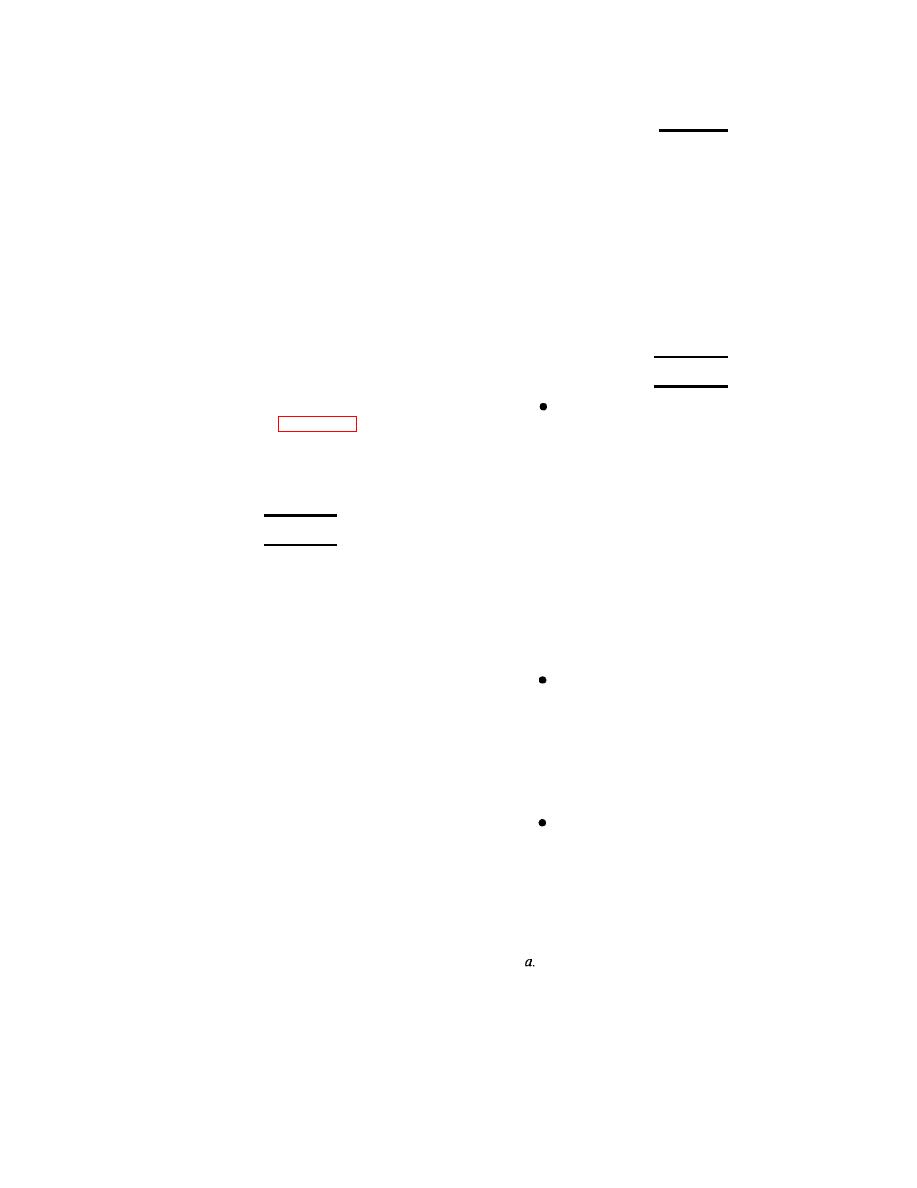
TM 9-2330-356-14
be performed by authorized unit or direct support
CAUTION
personnel with an MOS of 77F or equivalent.
Meters should be air dried thoroughly to
b.
There are several methods available to eliminate
eliminate rusting of internal moving parts.
combustibles from fuel tankers. The primary method is by
use of a purging chemical. Using a chemical to purge saves
Completely drain tank intetior, all piping, pump,
time, labor, and material compared to other methods. It
f.
meters, and filter/separator. Remove all accessory items,
greatly reduces the possibility of a combustible vapor
such as gages and floats, which might entrap fuel. Drain
buildup after the purging procedure has been completed
the equipment that has been removed. Wipe dry all
and after the vapor test readings show a safe level.
connections. Cloths or mops used are to be washed, dried,
and stored, or disposed of safely.
c.
Alternate methods include steam, forced air, and
oil purge.
d.
The methods described here will be chemical,
steam. and forced air.
WARNING
If the semitrailer is being shipped after draining
e.
Should an emergency arise requiring entry
into a tank which is not vapor-free, or which
and purging, refer to Chapter 4, Section XXI for
has an oxygen content less than
supplemental instructions.
19.5 percent, personnel who enter the tank
shall have an attached lifeline and wear
protective respiratory equipment In the
form of either a self-contained breathing
apparatus or a full facepiece mask with a
WARNING
pressure supply of respirable air. Another
person, also provided with respiratory
Discontinue all operations if an electrical
equipment, shall be stationed at the
storm Is threatening or In progress. Open
manhole opening and remain there to
flames or other sources of ignition, such as
watch personnel In the tank and summon
welding and cutting torches and ordinary
assistance if a rescue operation becomes
electrical equipment, shall not be introduced
necessary. Personnel should not enter a
in areas where flammable vapors may be
tank which is in the explosive range.
present. The tank being drained and purged
All vapor-freeing work by any method
shall be statically grounded prior to, and
should be carried on outdoors, remote
during, all operations.
from vehicles and other known sources of
ignition, and the tank unit must be
a.
Before any purging is started, semitrailer tank
stationed where flammable vapors will not
and piping must be drained into suitable containers, or an
blow or drift indoors. Failure to follow this
warning may result in serious injury or
oil/water separator.
death to personnel.
b.
Select a level area 100-feet from any building,
Combustible vapor testing must be
source of ignition, or sewer system. Position semitrailer so
conducted as prescribed In this manual
that the tank sump is in the lowest position.
and current field manuals and technical
bulletins. Vapor testing should not be
c. Have sufficient fire extinguishers available,
conducted during steam cleaning since
placed 50-feet upwind, and manned by qualified
excess moisture or lack of oxygen may
personnel.
cause false readings.
d. Static ground the semitrailer to an approved
Do not wear wool, nylon, silk, rayon, or other
(earth) ground.
clothing having a tendeny to generate static electricity.
Wear clean cotton clothing with no metal buttons,
e.
Place conductive metal or galvanized containers
b.
zippers, or fasteners. Remove all contents from pockets.
under all drain points. Ground containers to tank and to
tank's common ground. Grounding connections shall be
Wear rubber boots and rubber gloves.
made to clean, unpainted surfaces.
c.

